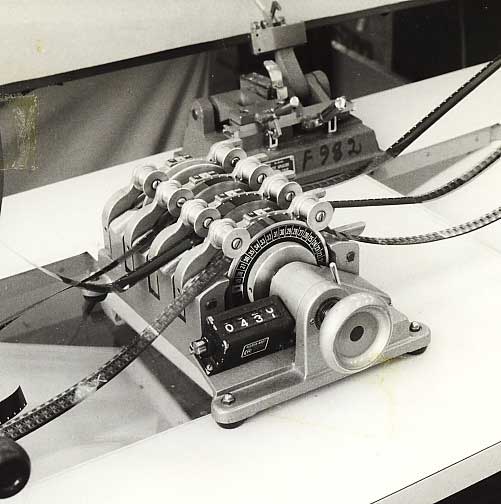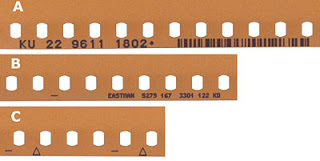Hey just wondering the process for editing film nowdays, how does it go from being a piece of film to be edited digitally?
You are using an out of date browser. It may not display this or other websites correctly.
You should upgrade or use an alternative browser.
You should upgrade or use an alternative browser.
How to edit film?
- Thread starter MGrinstead
- Start date
Nice gang synch!
We had these in college, but not very many of them:

RE: droowl. Yup, that's the DI way to do it - which is what just about everyone and their mother are doing now when they shoot on film.
@op - there used to be these folks called "negative cutters" who knew a special kind of black magic that allowed them to actually cut film together seamlessly so that it could be contact printed to a master and eventually duplicated onto stock for distribution. Editors would get work prints and once the final cut was established the negative cutters went to work, and matched the cuts using the edge code IIRC. Imagine that hasn't been done in a widespread manner in a long time though.
Edit: I might actually be thinking of the fun filled world of 16mm. Pretty sure the negative-cut to contact print thing was the norm in 35mm for a long time as well though.
We had these in college, but not very many of them:

RE: droowl. Yup, that's the DI way to do it - which is what just about everyone and their mother are doing now when they shoot on film.
@op - there used to be these folks called "negative cutters" who knew a special kind of black magic that allowed them to actually cut film together seamlessly so that it could be contact printed to a master and eventually duplicated onto stock for distribution. Editors would get work prints and once the final cut was established the negative cutters went to work, and matched the cuts using the edge code IIRC. Imagine that hasn't been done in a widespread manner in a long time though.
Edit: I might actually be thinking of the fun filled world of 16mm. Pretty sure the negative-cut to contact print thing was the norm in 35mm for a long time as well though.
Last edited:
telecine
There is a machine called a "Telecine" that transfers the film frames to video. If there is timecode/edgecode then after you edit the video on the computer, no differently that something shot on video, then when you are done you have an EDL, Edit Decision List. They use this EDL to conform the negative - meaning cut the film negative to match what you did on the computer.
Or, with the DI (Digital Intermediate) process, they scan each frame of film at uncompressed 2,048x1024 pixels per frame or at 4K, which is 4096x2048 pixels per frame. Not many people do this for every frame shot. They will do the telecine process, then only DI the final edit instead of the negative cutting as outlined above.
Hey just wondering the process for editing film nowdays, how does it go from being a piece of film to be edited digitally?
There is a machine called a "Telecine" that transfers the film frames to video. If there is timecode/edgecode then after you edit the video on the computer, no differently that something shot on video, then when you are done you have an EDL, Edit Decision List. They use this EDL to conform the negative - meaning cut the film negative to match what you did on the computer.
Or, with the DI (Digital Intermediate) process, they scan each frame of film at uncompressed 2,048x1024 pixels per frame or at 4K, which is 4096x2048 pixels per frame. Not many people do this for every frame shot. They will do the telecine process, then only DI the final edit instead of the negative cutting as outlined above.





